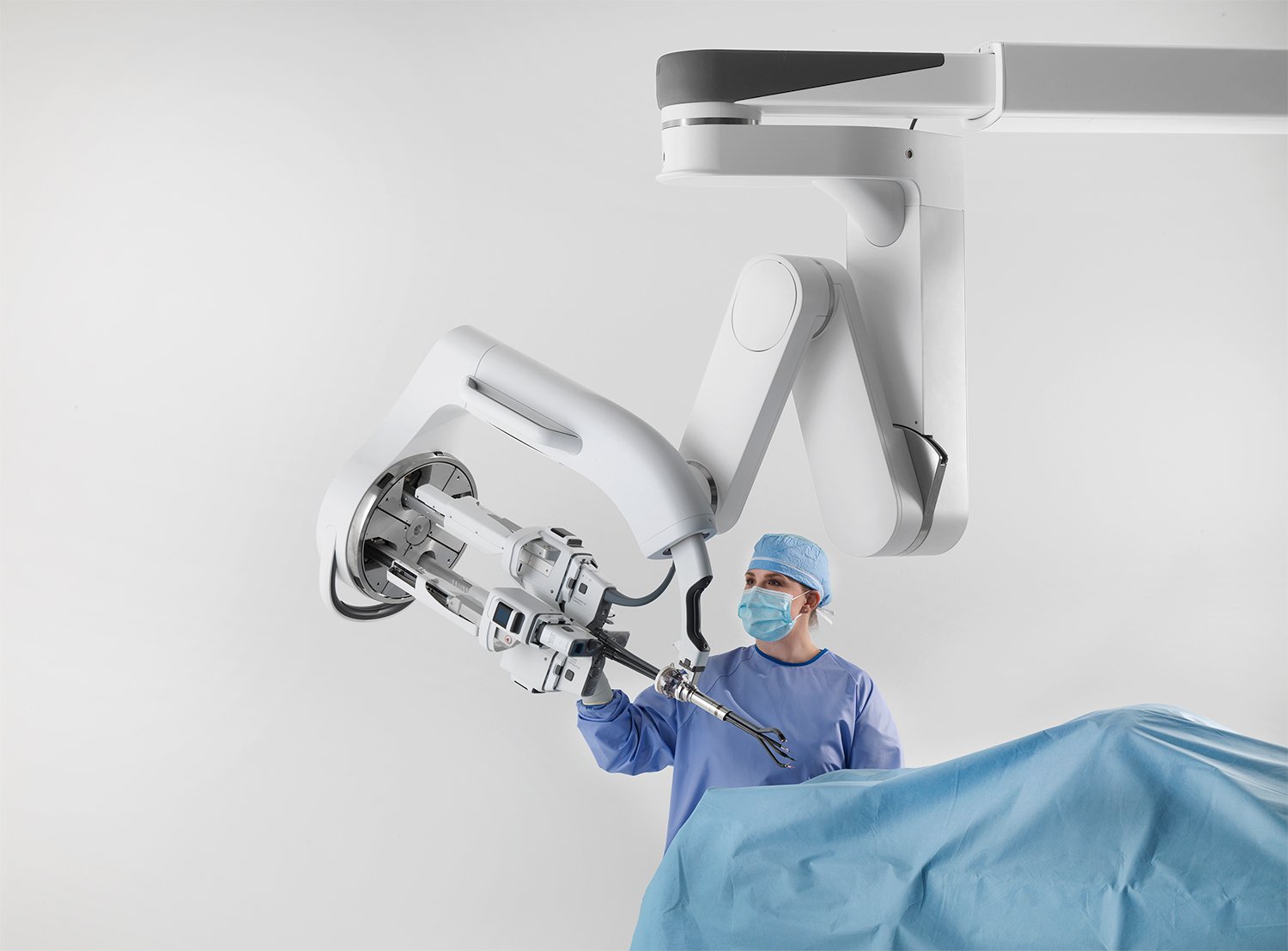预约演示
更新于:2025-05-07
Cedars-Sinai Health System
更新于:2025-05-07
概览
标签
肿瘤
其他疾病
内分泌与代谢疾病
小分子化药
单克隆抗体
基因疗法
疾病领域得分
一眼洞穿机构专注的疾病领域
暂无数据
技术平台
公司药物应用最多的技术
暂无数据
靶点
公司最常开发的靶点
暂无数据
| 排名前五的药物类型 | 数量 |
|---|---|
| 小分子化药 | 9 |
| 单克隆抗体 | 5 |
| 蛋白水解靶向嵌合体(PROTAC) | 1 |
| 干细胞疗法 | 1 |
| 基因疗法 | 1 |
关联
31
项与 Cedars-Sinai Health System 相关的药物靶点 |
作用机制 NET抑制剂 |
非在研适应症 |
最高研发阶段临床2期 |
首次获批国家/地区- |
首次获批日期- |
靶点 |
作用机制 ENG抑制剂 [+1] |
在研适应症 |
最高研发阶段临床2期 |
首次获批国家/地区- |
首次获批日期- |
579
项与 Cedars-Sinai Health System 相关的临床试验NCT05341947
A Phase I Trial of Activated Autologous T Cells Against Glioma Cancer Stem Cell Antigens for Patients With Recurrent Glioblastoma
The purpose of this study is to examine the use of activated T cells (ATCs) to assess the safety and tolerability of autologous activated T cells, as measured by the number of Grade 3 or higher toxicities, the number of serious adverse events, and treatment-related toxicities, according to National Cancer Institute Common Toxicity Criteria for Adverse Events (NCI CTCAE) Version 5, to find the maximum tolerated dose. The secondary objectives include evaluating the rate of overall survival, rate of progression-free survival, health-related quality of life parameters, overall response rate, immune response, and tumor stem cell antigen expression.
开始日期2026-06-01 |
申办/合作机构 |
NCT06012487
Correlates and Control of Blood Pressure Variability
The purpose the research is to prospectively demonstrate agreement between EHR and ambulatory blood pressure monitor (ABPM) derived blood pressure variability (BPV), as well as the feasibility of reducing BPV using a data-driven pharmacotherapeutic approach. To this end, this is a feasibility study that will make use of the Cedars-Sinai Health System including the Medical Delivery Network and the clinics of all practitioners who use the same EHR.
开始日期2026-05-01 |
申办/合作机构 |
NCT06784635
The Effect of Remote Treatment on Medical Provider Creative Thinking and Patient Disclosure
The investigators will be doing this study to understand how the environment of communication (including talking about health) impact doctors' ability to find solutions and health issues to clinical problems for patients.
Participants are being asked to take part in this research study because they are either:
* A final year medical student
* OR a person willing to act out a diagnosis.
Participants will do a few tasks:
* Questionnaires: Participants will be asked to complete a questionnaire before and after a short interview. The investigators will ask participants questions to find out their general psychological traits and skills, which can affect clinical interviews. The investigators believe it should take about 10 to 15 minutes to complete the questionnaire.
* Demographic Information: The investigators will ask participants about demographics, which may include their age, gender identity, race and ethnicity.
* Interview with a medical student/patient: This will be a recorded interview between a medical student and person acting as a patient. In this meeting, they will either meet online or in person, with white noise on or off, in a brightly lit room or a regularly lit room.
* Acting patients will be given a hypothetical condition, with a list of symptoms included. Besides this list, they will be asked to answer the medical questions as though they are themselves (e.g., height, weight)
* Medical students will be given a list of tip questions that will help with their diagnosis.
Participants are being asked to take part in this research study because they are either:
* A final year medical student
* OR a person willing to act out a diagnosis.
Participants will do a few tasks:
* Questionnaires: Participants will be asked to complete a questionnaire before and after a short interview. The investigators will ask participants questions to find out their general psychological traits and skills, which can affect clinical interviews. The investigators believe it should take about 10 to 15 minutes to complete the questionnaire.
* Demographic Information: The investigators will ask participants about demographics, which may include their age, gender identity, race and ethnicity.
* Interview with a medical student/patient: This will be a recorded interview between a medical student and person acting as a patient. In this meeting, they will either meet online or in person, with white noise on or off, in a brightly lit room or a regularly lit room.
* Acting patients will be given a hypothetical condition, with a list of symptoms included. Besides this list, they will be asked to answer the medical questions as though they are themselves (e.g., height, weight)
* Medical students will be given a list of tip questions that will help with their diagnosis.
开始日期2025-07-30 |
申办/合作机构 |
100 项与 Cedars-Sinai Health System 相关的临床结果
登录后查看更多信息
0 项与 Cedars-Sinai Health System 相关的专利(医药)
登录后查看更多信息
33,144
项与 Cedars-Sinai Health System 相关的文献(医药)2025-12-01·Journal of Stomatology, Oral and Maxillofacial Surgery
Objectifying aesthetic outcomes following face transplantation – the AI research metrics model (CAARISMA ® ARMM)
Article
作者: Lellouch, Alexandre G ; Heiland, Max ; Knoedler, Leonard ; Klimitz, Felix J ; Kauke-Navarro, Martin ; Schaschinger, Thomas ; Knoedler, Samuel ; Pooth, Rainer ; Hoch, Cosima C ; Niederegger, Tobias ; Koerdt, Steffen
2025-12-01·Current Cardiology Reports
The ImageGuideEcho Registry: Using Data Science to Understand and Improve Echocardiography
Review
作者: Rodriguez, Deily F ; Tyler, Thomas B Iii ; Spetko, Nicholas ; Ouyang, David ; Strom, Jordan B ; Oribabor, Jessica ; Anyanwu, Emeka
2025-12-01·Child's Nervous System
Flexion–extension cervical MRI imaging in pediatric patients with achondroplasia unsupervised by neurosurgery or radiology, is it safe?
Article
作者: Danielpour, Moise ; Watterson, Christopher ; Tuchman, Alexander ; Masarwy, Aseel
409
项与 Cedars-Sinai Health System 相关的新闻(医药)2025-04-25
Ipsen’s elafibranor has shown promise as a treatment for primary sclerosing cholangitis (PSC), a rare liver disease that currently has no approved treatment options.
Results from the phase 2 ELMWOOD study, which has been comparing two doses of the drug against placebo in 68 PSC patients, will be presented at this year’s European Association for the Study of the Liver congress.
PSC is a chronic disease characterised by inflammation and scarring of the bile ducts, which can results in liver damage and eventually liver failure. Symptoms vary, but can include itching, fatigue, abdominal pain and jaundice, with patients also experiencing serious complications such as liver cirrhosis and an increased risk of liver cancer.
Liver transplantation is currently the only treatment that can significantly improve the prognosis of PSC, underscoring the need for new approaches.
Data from ELMWOOD demonstrated a positive safety and tolerability profile, the trial’s primary endpoint, for elafibranor-treated patients versus those receiving placebo.
Efficacy benefits were also observed in the elafibranor groups. Patients receiving elafibranor experienced significant dose-dependent reductions in alkaline phosphatase at week 12 compared to placebo, with improvements seen as early as week four.
Similar results were demonstrated in other biochemical liver parameters, Ipsen said, including alanine aminotransferase and gamma-glutamyl transferase, two key biochemical markers of disease progression.
Additionally, elafibranor was associated with stabilisation in enhanced liver fibrosis compared to placebo at week 12, and patients receiving a 120mg dose of Ipsen’s drug experienced improvements in itch compared to those on placebo.
Taken orally once daily, Iqirvo is a peroxisome proliferator-activated receptor agonist that decreases bile toxicity and improves cholestasis by modulating bile acid synthesis, detoxification and transporters.
The drug recently gained approval in the US, EU and UK under the brand name Iqirvo to treat primary biliary cholangitis, another rare liver disease.
Christelle Huguet, executive vice president and head of research and development at Ipsen, said the results from ELMWOOD “reinforce elafibranor’s action as a PPARα/δ agonist in potentially treating multiple liver diseases, like PSC”.
An open-label 96-week extension study evaluating the safety and efficacy of elafibranor 120mg in PSC is ongoing.
临床结果临床2期上市批准
2025-04-16
Real-Time, 360-Degree Imaging Enhances Precision and Confidence in Cardiac Procedures
DUBLIN, April 16, 2025 /PRNewswire/ -- LUMA Vision Ltd., an innovative leader in advanced cardiac imaging and navigation, today announced the FDA clearance of its VERAFEYE™ Visualization Platform. This novel catheter-based imaging system provides real-time, two and four-dimensional, 360-degree visualization, significantly enhancing clinician precision and confidence during complex electrophysiology and structural heart procedures. The system is prepared for magnetic tracking and navigation of third-party catheters, which in the future, will further empower clinicians to perform complex procedures with greater precision and control.
The VERAFEYE system combines state-of-the-art imaging technology with advanced digital maneuverability, enabling clinicians to capture highly detailed, four-dimensional images that update in real time. With imaging depths up to 120 mm away from the catheter, it allows for dynamic high-resolution navigation and visualization of the heart, crucial to performing today's advanced electrophysiology and structural heart procedures with a wide variety of technologies. Traditional imaging catheters provide only two-dimensional imaging, often limiting clinicians' ability to view cardiac anatomy from all angles during procedures. The VERAFEYE catheter introduces a new era of intracardiac imaging, allowing for comprehensive, 360-degree visualization with enhanced depth and clarity.
"Our clinical experience with VERAFEYE is exciting, with the potential to simplify procedural workflow and efficiency," said Dr. Shephal Doshi, Director of Electrophysiology at Pacific Heart Institute/Cedars Sinai and investigator of the VERAFEYE system. "Real-time visualization and rapid creation of cardiac anatomy can facilitate de novo procedures with greater simplicity."
Fionn Lahart, CEO, at LUMA Vision, expressed excitement about the technology's potential: "We are incredibly proud of this achievement and the potential impact VERAFEYE will have in areas such as cardiac arrhythmias, left atrial appendage closure and structural heart. Our team and partners have worked tirelessly alongside clinicians to develop a product that can be the future of cardiac navigation, and this FDA clearance is a testament to their dedication and expertise. We look forward to seeing the positive difference VERAFEYE will make in the lives of patients and healthcare providers alike".
The successful approval of the VERAFEYE system and catheter represents a significant step toward improving procedural workflows and broadening the potential for many of the innovative technologies that need precise visualization to deliver effective treatment. By providing real-time, volumetric images of the heart in combination with magnetic navigation, the interactive visualization of the VERAFEYE system enables clinicians to make more informed decisions, potentially reducing procedure time and minimizing risks.
"The approval of VERAFEYE is a major advancement in intraprocedural cardiac imaging," said Dr. Anish Amin, System Medical Chief for Cardiac Electrophysiology, OhioHealth Heart and Vascular. "VERAFEYE's imaging capabilities demonstrate a necessary path forward in precision imaging and a strong foundation to further advance the standard of care."
About LUMA Vision
LUMA Vision is a privately held, medical device company based in Dublin, Ireland and Munich, Germany. LUMA Vision designs and develops cutting edge innovative technologies to significantly advance healthcare and solve truly global unmet clinical needs. VERAFEYE™ is a novel ultrasound based cardiac visualization and navigation platform for generating a 360-degree view, navigating and imaging all structures and devices around the catheter with an unprecedented field of view. With a commitment to advancing patient care, LUMA Vision focuses on delivering groundbreaking products that enhance clinical outcomes and improve lives around the world. LUMA Vision was founded by CEO Fionn Lahart and CTO Christoph Hennersperger. Learn more about LUMA Vision and VERAFEYE at
SOURCE LUMA Vision
WANT YOUR COMPANY'S NEWS FEATURED ON PRNEWSWIRE.COM?
440k+
Newsrooms &
Influencers
9k+
Digital Media
Outlets
270k+
Journalists
Opted In
GET STARTED
2025-04-10
The SP SureForm 45 instrument is built off the same technology as its multiport counterpart, including systems to monitor tissue compression before and during stapling. \n Intuitive has snagged a clearance from the FDA for a surgical stapler system designed for its single-port robotic platform, in what it describes as an agency first. The company’s SP SureForm 45 was greenlighted for use with its da Vinci SP system, spanning minimally invasive thoracic, colorectal and urologic procedures. Compared to its other robotic surgery systems—for example, the latest da Vinci 5, with its multiple arms that may operate through more than one opening in the body—the da Vinci SP can deliver three instruments, such as forceps and cutters, plus a 3D camera all through a single incision.The SP SureForm 45 is built off the same technology as its multiport counterpart, including systems to monitor tissue compression before and during stapling to ensure a secure hold and reduce the risk of damage.“Being able to use a SureForm 45 stapler in single-port robotic surgery helps provide surgeons with more control of their procedures from the da Vinci surgeon console, without the need to rely on an assistant to fire a stapler,” Intuitive Chief Medical Officer Myriam Curet, M.D., said in a statement. “This kind of control can help save valuable operating time.”While the da Vinci SP system is also cleared in the U.S. for transoral procedures for the mouth and throat, the SureForm 45 stapler instrument was not. Late last month, Intuitive also put forward two preclinical studies of the force feedback capabilities included with its da Vinci 5 robot, with its full-scale commercial launch set for this year. According to the company, the experiments found that force feedback at the surgeon’s control console led to gentler surgeries—with reductions in the total force applied to tissue models, during practice procedures of retraction, dissection and suturing.“The lack of a way to measure the forces applied to tissue may result in excessive force exerted, leading to unintentional tissue damage during surgery, which could have a negative clinical impact on patients including pain and recovery time,” said Michael Awad, M.D., Ph.D., a professor of surgery at Washington University School of Medicine in St. Louis, who helped conduct one of the studies published in the journal Surgical Endoscopy. That paper saw reductions in force by as much as 43% regardless of the surgeon’s experience level. The second study, performed at Cedars-Sinai Medical Center in Los Angeles, showed that novice surgeons saw less tissue trauma and fewer errors during suturing. “Suturing can be a unique challenge during robotic surgery because excessive force can break delicate sutures or injure healthy tissue, while insufficient forces might cause slippage or loose sutures,” said Andrew Hung, M.D., an associate professor of urology and computational biomedicine at Cedars-Sinai.

100 项与 Cedars-Sinai Health System 相关的药物交易
登录后查看更多信息
100 项与 Cedars-Sinai Health System 相关的转化医学
登录后查看更多信息
组织架构
使用我们的机构树数据加速您的研究。
登录
或

管线布局
2025年12月23日管线快照
管线布局中药物为当前组织机构及其子机构作为药物机构进行统计,早期临床1期并入临床1期,临床1/2期并入临床2期,临床2/3期并入临床3期
药物发现
2
9
临床前
临床申请
1
2
临床1期
临床2期
4
13
其他
登录后查看更多信息
当前项目
登录后查看更多信息
药物交易
使用我们的药物交易数据加速您的研究。
登录
或

转化医学
使用我们的转化医学数据加速您的研究。
登录
或

营收
使用 Synapse 探索超过 36 万个组织的财务状况。
登录
或

科研基金(NIH)
访问超过 200 万项资助和基金信息,以提升您的研究之旅。
登录
或

投资
深入了解从初创企业到成熟企业的最新公司投资动态。
登录
或

融资
发掘融资趋势以验证和推进您的投资机会。
登录
或

生物医药百科问答
全新生物医药AI Agent 覆盖科研全链路,让突破性发现快人一步
立即开始免费试用!
智慧芽新药情报库是智慧芽专为生命科学人士构建的基于AI的创新药情报平台,助您全方位提升您的研发与决策效率。
立即开始数据试用!
智慧芽新药库数据也通过智慧芽数据服务平台,以API或者数据包形式对外开放,助您更加充分利用智慧芽新药情报信息。
生物序列数据库
生物药研发创新
免费使用
化学结构数据库
小分子化药研发创新
免费使用





